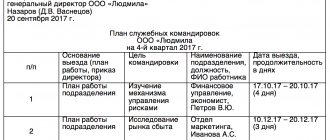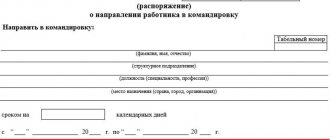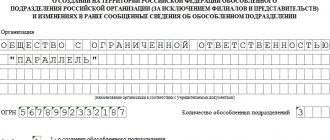Place of a travel certificate in the travel procedure
Seconding an employee involves completing several documents at once
Secondment is a rather complex and relatively lengthy process, which consists not only of paperwork, but also preliminary verification of the possibility of sending an employee on a trip, obtaining his consent if necessary, paying an advance payment for travel, etc. Each of these procedural points is a mandatory requirement labor legislation, directly provided for by a number of norms (Chapter 24 of the Labor Code and Regulations on business trips No. 749 of October 13, 2008).
A business trip in accordance with the Labor Code is considered to be a trip by an employee to a populated area other than where, in accordance with the employment agreement, his place of work is located, at the direction of the employer, to perform tasks related to job functions. The legal basis for a business trip is an administrative document issued by the employer - an order.
The process of documenting a business trip is not clearly regulated by any of the mentioned legislative acts. They also do not contain a direct requirement to issue a travel certificate, as well as an official assignment, a report on its implementation, etc. All these points are at the discretion of the employer, who, in accordance with Art. 22 of the Labor Code has the right to reflect a clear procedure and conditions of the procedure in its own local regulations (for example, create a provision on business trips).
Why do you still need a travel permit?
A business trip is, although not a mandatory document, its practical significance is quite great
Despite the fact that the travel certificate is undeservedly “depreciated” by the legislator, this document has several practically important aspects:
- Confirmation of the identity of the business traveler, clarification of the destination and purpose of the trip for counterparties at the place of travel. In other words, upon arriving at the destination, the employee presents the document in question, and the receiving party thereby receives confirmation of the purpose of his visit.
- Confirmation of the fact of travel for the party sending the employee. Based on the order alone and the absence of the employee on site on the day of the business trip, it is difficult to judge whether he actually visited the destination, because in some cases the task can be completed remotely. The travel certificate contains marks of arrival and departure, certified by the signature and seal of the receiving party.
- On the way to the destination and back, the employee can present a travel certificate to a representative of any government agency or enterprise, thereby confirming the fact of his official travel, its route and purpose.
It should be remembered that a travel document can serve as a supporting document and is generally valid only upon presentation of a passport or other identity document.
What points should be taken into account in the travel regulations, as in the local legal acts of the organization
In order for the company to have a clear travel mechanism, as well thought out and adapted to production realities, it is recommended to develop and approve a local policy for business trips. This document may include many aspects, regulate in detail all stages of the trip, and in relation to the travel document:
- fix its shape;
- establish departments and positions responsible for preparing the document, marking arrival and departure;
- contain rules for maintaining a log of registration of certificates;
- determine positions authorized to sign the document;
- establish a procedure for paying business trip expenses;
- regulate the procedure and terms of document storage.
As a rule, the personnel officer is responsible for paperwork in the organization. The head of the organization signs the travel certificates.
Related documents
A travel certificate can be issued together with the following accompanying documents:
- Job assignment - according to the new rules, this form is drawn up at the discretion of management. Business entities often use it to reflect to employees the tasks that they must solve on a given trip.
- Progress Report - This should be used when the work assignment is not being used. In it, the posted employee describes exactly what he did on his business trip.
- Advance report (Form AO1) - in it, an employee returning from a business trip reflects the expenses incurred. All of them are indicated according to the provided supporting documents, which are included as an appendix to the expense report.
- Invoices and receipts, rental agreement - they are issued to the employee during a business trip when renting housing to confirm the amounts spent on hotels.
- Tickets, insurance policies, etc. - they are used as confirmation of the travel expenses of the traveler. This can also include boarding passes, linen receipts, checks and receipts for receipts, etc.
- Other documents that confirm other expenses incurred by the employee on a business trip. For example, receipts for storage, receipts for communication services.
- An official note drawn up by the employee upon return with fuel receipts attached to it. It is composed mainly when using personal or business transport on a trip.
- An official note drawn up by an employee for expenses for which he does not have supporting documents - travel, accommodation, etc.
Registration of a travel certificate
Regulations of the State Statistics Committee No. 1 of 01/05/2004. two unified forms for travel certificates have been approved - T-10.
The unified form of travel certificate was approved by the State Statistics Committee
Since 2013, this form is not mandatory for use - each employer has the right to develop their own, more convenient for use.
The general rules for filling out and submitting a travel certificate to an organization are as follows:
- The certificate is filled out and signed by the manager by the employee who is entrusted with the functions of processing the business trip, after issuing the order on the business trip.
- The manager’s signature, as a rule, is affixed with the organization’s round seal (the condition depends on the chosen form of the certificate and the procedure established by the local legal regulations on business trips).
- The certificate can be registered in a special journal for registering such documents, if one is maintained at the enterprise.
- Before issuing a certificate to the employee, the responsible person puts a mark on the retirement, certifying it with his own signature and the seal of the structural unit (if any).
- The certificate is issued to the posted employee against signature in the registration register.
- Upon arrival at the destination and upon departure from it, the employee turns to the responsible person of the receiving organization to put similar marks on the certificate.
- Having arrived at the organization that sent him, the employee again comes to the person who issued the certificate, who makes the final mark.
- The certificate form may require the signature of the head of the structural unit in which the posted worker works, who must assess whether the official task has been completed.
- The business traveler submits the certificate to the accounting department for calculation of payments.
The business trip log is drawn up in any form
Paid travel certificates are stored among the primary accounting documents of the accounting department in accordance with the established rules for their storage, archiving and destruction. According to Order of the Ministry of Culture of Russia dated August 25, 2010 N 558, the storage period for a travel certificate in an organization is 5 years.
Rules for filling out form T-10
The T-10 form can be filled out either by hand or printed using computer technology. However, it is important to remember that it is filled out solely on the basis of the relevant order - this is where all the data is taken from.
All data for the travel certificate is contained in the travel order
If the information about the purpose of the trip (destination, date of trip) indicated in the certificate does not correspond to that specified in the order, such a business trip cannot be paid for by the accounting department.
The following columns on the front side of the T-10 form must be completed:
- company name - you can specify both full and abbreviated ones, however, it must fully correspond to the name defined by the statutory documents;
- the registration number of the certificate and the date of its issue - in accordance with the business trip registration log;
- employee personnel number - in accordance with accounting data;
- Full name of the seconded person, without abbreviations;
- the name of the structural unit in which the secondee works;
- the name of his position;
- destination - name of the company, its address;
- purpose of the trip - indicated in strict accordance with the order;
- start and end dates of the business trip (time limits are indicated without taking into account the time spent on the road);
- details of an identity document (passport, service ID, etc.);
- signature of the head of the organization or other authorized person, company seal.
The signature of the head of the organization is affixed to the front side of the certificate and a seal is affixed
The reverse side of the form contains departure and arrival notes. Each mark includes:
- name of the locality (nothing else needs to be indicated here);
- date;
- position, full name and signature of the person authorized to mark travel certificates at a particular destination.
In the arrival/departure note, it is enough to indicate only the locality - the exact address is not necessary
Each mark is affixed with the seal of a structural unit or organization. Marks are filled in chronological order from left to right from top to bottom .
Recording the work time of a business traveler
Data on the employee’s working time on a business trip is entered into the T-13 time sheet in accordance with the order to be sent on a business trip. Hours worked are not indicated; business days are marked with an alphabetic (K) or digital code (06).
If the organization maintains a business trip log, data on the employee’s departure and arrival is entered into it. Keeping such a journal is provided for by local regulations, but is not mandatory for the employer.
| Corporate training is individual programs that solve exactly your work problems. Review of key changes in the Labor Code for 2020-2021. in our corporate seminar. |
Rules for changing and canceling a travel certificate
Since a travel certificate is issued on the basis of an order, all changes must first of all be made to the order. Further, depending on the situation, either a new certificate can be issued or the old one can be corrected.
Changes to the travel order can be made by another, new order, which will indicate which words should be read in a new way.
Corrections to the certificate are made by crossing out incorrect information and adding new ones with the obligatory “certification” inscription - “Corrected from ... to ... believe.” The inscription is certified by the signature of the official and the seal of the organization.
A business trip can only be canceled by issuing a special order. The issued certificate must be destroyed.
The order to cancel a business trip is drawn up in any form









